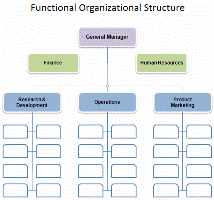
How your business is organized can have a major impact on the outcome of your business. Business organizations have morphed in many different ways from the early 1900’s when Henry Ford invented an assembly line. Even today, you are likely to find different organization structures in different parts of the world as well as industries. The way Google is organized and operates is quite different from how organization is structured at GE. A new organization structure concept based on the principle of Service Oriented Architecture (SOA) is a different way of thinking than the traditional hierarchical organization.
What is SOA?
Large enterprises are typically organized in strict, military-like hierarchies. Assembly line supervisors report to line managers. Line managers report to production managers, who in turn have vice president as a manager. Often, the manager at each level exerts a great control over decisions of those reporting him.
An organization established on SOA principles is different. The relationship between the manager and his direct reports are somewhat at arm’s length. When a middle level manager needs production increased by 5% in a given week, he only needs to ask the production manager – not micromanage him. It’s about what rather than how.
The middle level manager can treat the production floor as an outsourced business that he simply sends orders to. His job is to expect results and not micromanage every step of the process. He doesn’t manage the production manager or his assembly line any more than he would manage a production manager at an outsourced factory in China. In essence, this is what service-oriented architecture is all about – each level of management looks upon the levels below as if they were independent businesses that provide them a service.
Service Oriented Architecture can provide several benefits not offered by traditional hierarchical organizations.
Better control
SOA provides opportunity to lower and middle management make decisions in their areas of expertise. These leaders know the situation intimately and are in the best position to make decision. The SOA allows them to do what is in the best interest of the company. It also frees up top management to focus their time on more strategic areas of the business.
Responsiveness
Business environments can change quickly these days. To stay competitive, businesses need to be able to respond in an agile manner. For instance, IT departments can help a large business quickly respond to changed circumstances by independently looking for new applications and implementing them, creating a better web or social networking presence, making new information available to the rest of the company, and so on. If top management exerts tight control over every one of these decisions, it would take the company a long time to respond to any kind of change.
Cost Savings
In traditional, hierarchically run organizations, every management level needs to employ extra people to keep an eye on the departments below them. This wastes resources. By allowing each department to manage its responsibilities on its own you do not waste resources and money for this multiple levels of unneeded oversight.
Conventionally-built companies often resist the call to switch to the SOA organizational plan. However, it is in the best interest of everyone to explain to top management the benefits provided by SOA in terms of responsiveness, cost and better control.
How is your business organized? Do you think this new organization structure can help you do better?
Kaylee Cowling is a business owner with several years experience. An avid blogger, she enjoys helping others by posting her informative articles online. Visit the www.isoagroup.com webpage for more ideas.






